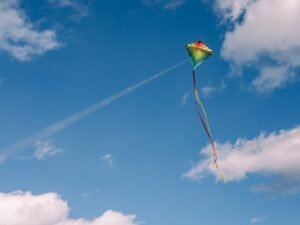Comprehensive Guide of Animal Communication Studies
Overview
Animal Communication Studies is a fascinating and interdisciplinary hobby that explores the ways in which animals communicate with each other and with humans. This field encompasses various aspects of animal behavior, psychology, and linguistics, allowing enthusiasts to delve into the intricate systems of signals, sounds, and body language used by different species. Participants in this hobby often engage in observing animals in their natural habitats, conducting research, and even training pets to understand and respond to human cues. The study of animal communication not only enhances our understanding of wildlife and domestic animals but also fosters a deeper appreciation for the complexity of non-human communication systems.
History
The study of animal communication has roots in ancient civilizations, where observations of animal behavior were often linked to mythology and folklore. However, it wasn’t until the 20th century that systematic studies began to emerge. Pioneering researchers like Konrad Lorenz and Nikolaas Tinbergen laid the groundwork for ethology, the scientific study of animal behavior. In the latter half of the century, significant advancements were made by scientists such as Jane Goodall, who studied the communication of chimpanzees, and John Lilly, who explored dolphin communication. The development of technology, such as audio recording devices and video analysis, has further propelled the field, allowing for more detailed observations and analyses of animal interactions.
Popularity and Demographics
Animal Communication Studies has gained popularity among a diverse group of individuals, including animal lovers, students, and professionals in fields such as veterinary science, wildlife conservation, and animal training. Workshops, online courses, and community groups dedicated to this hobby have emerged, attracting participants from various age groups and backgrounds. The rise of social media has also played a significant role in popularizing this hobby, as enthusiasts share their findings, experiences, and training techniques with a global audience. Additionally, documentaries and educational programs focusing on animal behavior have sparked interest, encouraging more people to explore the fascinating world of animal communication.
Sponsored Hobbyists and Vendors
Become a Sponsor!
Affiliate Disclaimer: Throughout some sections below, Hobby Spotlight may suggest some tools, equipment or material using affiliate links. By purchasing any of those items, Hobby Spotlight may earn a small commission. This helps fund our website, content and services without directly charging our users.
Getting Started
Essential Tools for Animal Communication:
Beginner
- Animal Communication Book: A beginner’s guide to understanding animal communication.
- Notebook for Observations: A notebook to record observations and insights about animal behavior.
- Recording Device: A simple audio recorder to capture animal sounds for analysis.
- Field Guide to Local Wildlife: A guidebook to help identify local animals and their behaviors.
- Camera for Wildlife Photography: A basic camera to document animal interactions and behaviors.
Intermediate
- Advanced Animal Communication Course: An online course for deeper understanding of animal communication techniques.
- Animal Behavior Analysis Software: Software to analyze and interpret animal communication patterns.
- Binoculars for Wildlife Observation: High-quality binoculars for observing animals from a distance.
- Animal Tracking Kit: A kit that includes tools for tracking and understanding animal movements.
- Ethology Research Journal: A journal for documenting research findings and observations in animal behavior.
Basic Requirements and Initial Setup:
- Research Materials: Acquire books, articles, and online resources that cover the fundamentals of animal communication, including species-specific behaviors and signals.
- Observation Tools: Use binoculars, cameras, or audio recording devices to observe and document animal behaviors in their natural habitats.
- Field Study Equipment: Prepare notebooks, field guides, and data collection tools to record observations and analyze communication patterns effectively.
Fundamental Skills to Learn:
- Observation Skills: Develop the ability to notice subtle behaviors and signals in animals, which is crucial for understanding their communication.
- Species Identification: Learn to identify different species and their unique communication methods, including vocalizations and body language.
- Data Analysis: Gain skills in analyzing collected data to draw conclusions about communication patterns and behaviors.
- Ethology Knowledge: Understand the principles of animal behavior and how they relate to communication in various species.
- Patience and Persistence: Cultivate the ability to spend extended periods observing animals without disturbing them, as communication can be subtle and infrequent.
Sub-Hobby/Common Activities:
- Bird Watching: Observing and identifying different bird species while noting their calls and behaviors.
- Canine Communication: Studying how dogs communicate with humans and other dogs through body language and vocalizations.
- Feline Behavior Analysis: Exploring the various ways cats communicate, including vocal sounds and body posture.
- Marine Mammal Studies: Investigating the communication methods of dolphins and whales, including echolocation and vocalizations.
- Insect Communication Research: Examining how insects, such as bees and ants, communicate through pheromones and dances.
Terminology:
- Vocalization: Sounds made by animals to communicate, including calls, songs, and alarms.
- Body Language: Non-verbal signals conveyed through posture, movement, and facial expressions in animals.
- Pheromones: Chemical signals released by animals to communicate with others of the same species, often related to mating or territory.
- Territoriality: The behavior of animals defending a specific area from others, often communicated through vocalizations or scent marking.
- Social Grooming: A behavior in which animals clean each other, often serving as a form of social bonding and communication.
- Alarm Calls: Specific vocalizations that alert other animals to potential danger.
- Play Behavior: Actions that may appear non-serious but serve as a form of communication and social interaction among animals.
- Submissive Posture: Body language indicating an animal’s submission to avoid conflict, often seen in social species.
- Dominance Hierarchy: The social ranking among animals in a group, often communicated through displays of strength or aggression.
- Imprinting: A form of learning in which young animals develop attachments and learn communication cues from their parents or caregivers.
Advanced Topics and Specializations
Advanced Tools and Equipment:
- Animal Communication Research Kit: A comprehensive kit that includes tools for recording and analyzing animal sounds and behaviors.
- Bioacoustic Monitoring System: Advanced equipment for capturing and analyzing animal vocalizations in their natural habitats.
- Field Guide to Animal Behavior: An extensive reference book that provides insights into various species’ communication methods and behaviors.
- Animal Behavior Observation Software: Software designed for tracking and analyzing animal interactions and communication patterns.
- High-Quality Binoculars: Optical equipment for observing animals in the wild, enhancing the study of their communication and behavior.
Advanced Projects and Achievements:
- Inter-Species Communication Workshops: Organizing workshops that teach participants how to interpret animal behaviors and vocalizations, enhancing understanding between humans and animals.
- Field Research on Animal Signals: Conducting studies in natural habitats to document and analyze the communication methods of various species, contributing to the body of knowledge in ethology.
- Development of Animal Communication Apps: Creating mobile applications that help users identify and understand animal sounds and body language, making communication more accessible.
Advanced Techniques and Methods:
- Behavioral Observation: Utilizing systematic observation techniques to record and analyze animal interactions and communication patterns in their natural environments.
- Vocalization Analysis: Employing software tools to analyze the frequency, pitch, and duration of animal sounds, providing insights into their meanings and contexts.
- Ethological Field Studies: Conducting long-term studies in the field to observe and document the social structures and communication methods of specific animal groups.
Specializations and Niche Areas:
- Canine Communication: Focusing on understanding dog behavior and vocalizations to improve training and owner-pet relationships.
- Equine Communication: Studying horse body language and vocalizations to enhance training methods and rider-horse interactions.
- Wildlife Communication: Investigating how wild animals communicate within their ecosystems, including mating calls and territorial signals.
- Marine Animal Communication: Exploring the unique communication methods of marine species, such as dolphins and whales, through sound and body language.
- Birdsong Studies: Analyzing the complexity of bird vocalizations and their roles in mating, territory establishment, and social interactions.
Future Trends and Innovations:
- Increased use of technology for remote observation and data collection in animal communication studies.
- Growing interest in interdisciplinary approaches that combine animal communication with psychology and neuroscience.
- Development of AI tools to analyze and interpret animal sounds and behaviors more accurately.
- Expansion of citizen science projects that engage the public in observing and reporting animal communication.
- Focus on conservation efforts that utilize understanding of animal communication to protect endangered species and their habitats.
Technology Integration:
- Sound Analysis Software: Tools that allow researchers to analyze animal vocalizations in detail, aiding in the understanding of communication patterns.
- Remote Sensing Devices: Utilizing cameras and microphones to monitor animal behavior and communication in their natural habitats without human interference.
- Mobile Apps for Animal Identification: Applications that help users identify animal species based on sounds and behaviors, promoting awareness and education.
- Virtual Reality Experiences: Creating immersive experiences that allow users to engage with animals and learn about their communication in a simulated environment.
- Online Learning Platforms: Offering courses and resources on animal communication, making knowledge accessible to a wider audience.
Further Learning and Resources
Books:
- Animal Speak by Ted Andrews: This book serves as an introduction to the world of animal communication, providing insights into understanding animal behavior and the messages they convey.
- The Language of Animals by Carol Gurney: A beginner-friendly guide that explores the basics of animal communication, offering practical exercises to connect with animals on a deeper level.
- Animal Communication: A New Approach by Penelope Smith: This book offers advanced insights into animal communication, integrating spiritual perspectives and practical applications for experienced practitioners.
Websites:
- Animal Communication, https://www.animalcommunication.com – A comprehensive resource for understanding animal communication, featuring articles, workshops, and expert insights.
- Pet Communication, https://www.petcommunication.com – Offers various resources, including books and online courses, to help pet owners connect with their animals.
- Animal Communicator, https://www.animalcommunicator.com – Provides information on animal communication services, workshops, and testimonials from clients.
- The Animal Communication Network, https://www.animalcommunicationnetwork.com – A platform for learning about animal communication through articles, courses, and community events.
- Animal Talk, https://www.animaltalk.com – Features a variety of resources, including podcasts and articles, focused on enhancing the bond between humans and animals.
Courses:
- Animal Communication Basics, https://www.animalcommunication.com/courses/basics – An introductory course designed for beginners to learn the fundamentals of animal communication.
- Advanced Animal Communication Techniques, https://www.petcommunication.com/courses/advanced – A course for those with prior knowledge, focusing on advanced techniques and deeper connections with animals.
- Intuitive Animal Communication, https://www.animalcommunicator.com/courses/intuitive – This course teaches participants how to tap into their intuition to communicate with animals effectively.
- Animal Communication Certification Program, https://www.animalcommunicationnetwork.com/certification – A comprehensive program that certifies individuals in animal communication, suitable for those looking to pursue it professionally.
- Online Workshops for Animal Lovers, https://www.animaltalk.com/workshops – A series of online workshops covering various aspects of animal communication, suitable for all skill levels.
Content Creators and Community
Content Creators:
- Anna Breytenbach (YouTube): A renowned animal communicator who shares her experiences and techniques in connecting with animals, helping viewers understand their pets’ emotions and needs.
- Amelia Kinkade (Instagram): An author and animal communicator who provides insights into animal behavior and communication through engaging posts and stories.
- Kathy O’Leary (Facebook): Offers workshops and online courses on animal communication, sharing tips and personal stories to inspire others in their journey.
Online Forums and Social Media Groups:
- Reddit – /r/AnimalCommunication: A community for sharing experiences, tips, and resources related to animal communication.
- Facebook Animal Communication Groups: Various groups where members discuss techniques, share stories, and seek advice on communicating with animals.
- Instagram Hashtags (#AnimalCommunication, #PetWhisperer): Follow these hashtags to discover inspiring stories and tips from fellow enthusiasts.
- LinkedIn Groups: Professional groups focused on animal communication and holistic animal care, providing networking opportunities.
Local Clubs and Organizations:
- Animal Communication Workshops: Many local organizations offer workshops where enthusiasts can learn and practice animal communication techniques.
- Pet Therapy Groups: Organizations that focus on the emotional connection between humans and animals, often incorporating communication techniques.
- Holistic Pet Care Associations: Groups that promote holistic approaches to animal care, including communication methods.
- Meetup Groups: Platforms like Meetup.com host local gatherings for those interested in animal communication and related practices.
Events, Meetups, and Conventions:
- Animal Communication Conferences: Events that bring together experts and enthusiasts to share knowledge and experiences in animal communication.
- Pet Expos: Many expos feature workshops and talks on animal communication, providing opportunities to learn from professionals.
- Local Animal Rescue Fundraisers: Events that often include discussions and workshops on understanding animal behavior and communication.
- Workshops at Holistic Fairs: Learn about animal communication alongside other holistic practices at various fairs and expos.
- Online Webinars: Many experts host webinars on animal communication, allowing participants to learn from the comfort of their homes.
Associated Hobbies
- Animal Behavior Observation: This hobby involves closely watching and documenting the behaviors of various animals in their natural habitats. Enthusiasts often keep journals or blogs to share their findings and insights.
- Wildlife Photography: Capturing images of animals in their natural environments can be a rewarding pursuit. This hobby combines artistic skills with a passion for wildlife, often leading to stunning portfolios.
- Pet Training: Many individuals enjoy training their pets, using techniques based on understanding animal communication. This can enhance the bond between pet and owner while improving the pet’s behavior.
- Volunteering at Animal Shelters: Engaging with animals in shelters allows individuals to practice their communication skills while helping animals in need. This can be a fulfilling way to contribute to animal welfare.
- Reading Animal Behavior Literature: Many hobbyists delve into books and research articles about animal communication and behavior, expanding their knowledge and understanding of different species.
- Participating in Animal Rescue Efforts: Involvement in rescue organizations allows individuals to apply their communication skills to help rehabilitate and rehome animals, making a significant impact on their lives.
- Attending Workshops and Seminars: Many enthusiasts seek out educational opportunities to learn from experts in animal communication, enhancing their skills and knowledge through hands-on experiences.
- Creating Educational Content: Some hobbyists enjoy sharing their knowledge through blogs, videos, or social media, educating others about animal communication and promoting awareness of animal welfare issues.
Cost and Budgeting
Initial Investment and Ongoing Costs:
- Initial Investment: Starting in animal communication studies can require an initial investment ranging from $100 to $500. This may include books, online courses, or workshops that teach the basics of animal behavior and communication techniques. Some practitioners may also invest in tools such as journals or recording devices to document their observations.
- Ongoing Costs: Ongoing costs can include additional courses or workshops, which may range from $50 to $300 each, depending on the depth of study. Membership in professional organizations or subscriptions to relevant journals can also incur costs, typically around $50 to $150 annually. Additionally, travel expenses may arise if attending conferences or seminars.
Budget-Friendly Options:
- Free Resources: Many online platforms offer free resources, including articles, videos, and webinars on animal communication. Websites like YouTube and various animal welfare organizations provide valuable insights without any cost.
- Community Workshops: Look for local community centers or animal shelters that may offer free or low-cost workshops on animal behavior and communication, providing hands-on experience without a significant financial commitment.
- Library Resources: Public libraries often have a selection of books and materials on animal communication that can be borrowed for free, allowing you to explore the subject without any investment.
Where to Buy:
- Online Course Platforms: Websites like Udemy, Coursera, and Skillshare offer a variety of courses on animal communication, often at discounted rates or with free trials.
- Bookstores and Online Retailers: Major bookstores and online platforms like Amazon provide a wide range of books on animal communication, from beginner guides to advanced studies.
- Specialized Workshops: Look for workshops hosted by experienced animal communicators, which can often be found through social media or dedicated websites, providing both learning and networking opportunities.
Money Making
How to Turn the Hobby into a Profession or Side Hustle:
- Animal Communication Consultant: Use your skills in animal communication to offer consulting services to pet owners. Help them understand their pets’ behaviors, needs, and emotions, providing insights that can improve the human-animal bond.
- Workshops and Seminars: Organize and conduct workshops or seminars on animal communication. Teach others how to connect with their pets and understand animal behavior, either in-person or through online platforms. This can be a great way to share your knowledge and earn income.
- Animal Communication Author: Write and publish books or e-books on animal communication. Share your experiences, techniques, and case studies to educate others. This can also include creating guides or workbooks that help readers practice their skills.
- Online Courses: Develop and sell online courses that teach animal communication techniques. Use platforms like Udemy or Teachable to reach a wider audience. This allows you to create passive income while sharing your passion with others.
- Pet Behavior Specialist: Combine your animal communication skills with knowledge of animal behavior to work as a pet behavior specialist. Help pet owners address behavioral issues by providing tailored advice and strategies based on your understanding of their pets’ needs.
Benefits and Enjoyment
Physical, Mental, and Social Benefits:
- Enhanced Understanding of Animals: Engaging in animal communication studies allows individuals to develop a deeper understanding of animal behavior and emotions. This knowledge can lead to improved relationships with pets and wildlife, fostering empathy and compassion.
- Mental Stimulation: Studying animal communication involves critical thinking and observation skills, which can enhance cognitive function. Analyzing different forms of communication, such as body language and vocalizations, keeps the mind active and engaged.
- Community and Connection: This hobby often brings together like-minded individuals who share a passion for animals. Participating in workshops, seminars, or online forums can create a sense of belonging and provide opportunities for social interaction and collaboration.
Success Stories and Inspirational Examples:
- Anna Breytenbach: A renowned animal communicator, Anna Breytenbach has worked with various species, helping to bridge the gap between humans and animals. Her success stories include resolving behavioral issues in pets and facilitating healing for animals in distress, showcasing the profound impact of animal communication.
- Sonya Fitzpatrick: As a pioneer in the field of animal communication, Sonya Fitzpatrick has gained recognition through her radio show and books. She has inspired countless individuals to explore their intuitive abilities and connect with animals on a deeper level.
- Dr. John C. Lilly: A neuroscientist and dolphin researcher, Dr. Lilly’s work in animal communication has opened new avenues for understanding interspecies communication. His groundbreaking studies have inspired many to consider the intelligence and emotional depth of animals.
Ways to Enjoy and Grow in the Hobby:
- Attend Workshops and Seminars: Participating in workshops led by experienced animal communicators can enhance your skills and knowledge. These events often provide hands-on experience and valuable insights into the nuances of animal communication.
- Practice with Your Pets: Regularly practicing animal communication with your own pets can help you refine your skills. Pay attention to their body language, vocalizations, and energy, and try to interpret their needs and emotions.
- Join Online Communities: Engaging with online forums or social media groups dedicated to animal communication can provide support and resources. Sharing experiences and learning from others can enrich your understanding and enjoyment of the hobby.
Challenges and Solutions
Common Challenges Faced by Hobbyists:
- Understanding Animal Behavior: One of the primary challenges in animal communication studies is grasping the complex behaviors and signals of different species. Each animal has its own unique way of communicating, which can be difficult to interpret without proper knowledge and experience.
- Access to Resources: Finding reliable resources, such as books, courses, or workshops on animal communication, can be challenging. Many hobbyists struggle to locate quality materials that provide accurate and comprehensive information.
- Time Commitment: Studying animal communication requires a significant time investment. Balancing this hobby with other responsibilities, such as work or family, can be difficult for many enthusiasts.
Tips for Overcoming These Challenges:
- Start with One Species: Focus on a single species to study initially. This approach allows you to deepen your understanding of that animal’s communication methods before expanding to others.
- Utilize Online Resources: Take advantage of online courses, webinars, and forums dedicated to animal communication. These platforms often provide valuable insights and connect you with experienced practitioners.
- Set a Schedule: Dedicate specific times each week to study and practice animal communication. By treating it as a priority, you can ensure consistent progress in your understanding and skills.
Safety Considerations and Best Practices:
- Always approach animals with caution and respect their space to avoid stress or aggression.
- Educate yourself about the specific needs and behaviors of the animals you are studying to ensure safe interactions.
- Use positive reinforcement techniques when working with animals to foster trust and cooperation.
- Be aware of your surroundings and potential hazards, especially when working with wildlife or in unfamiliar environments.
- Document your observations and experiences to track your progress and refine your understanding of animal communication over time.
Conclusion and Encouragement
Recap of Key Points:
- Animal communication studies explore the ways in which animals convey information to one another, including vocalizations, body language, and chemical signals.
- This hobby can deepen your understanding of animal behavior and enhance your ability to connect with pets and wildlife.
- Engaging in animal communication studies can lead to improved training techniques and a more harmonious relationship with animals.
- It encourages observation and patience, as understanding subtle cues requires time and practice.
- Animal communication studies can be pursued through various resources, including books, online courses, and workshops, making it accessible to anyone interested.
Encouragement to Start and Enjoy the Hobby:
- Starting your journey in animal communication studies can be as simple as observing your pet’s behavior and trying to interpret their signals, making it an easy entry point for beginners.
- This hobby fosters a deeper appreciation for the intelligence and emotional depth of animals, enriching your interactions and experiences with them.
- Joining a community of fellow enthusiasts can provide support, resources, and shared experiences, making the learning process more enjoyable and engaging.
Final Tips and Motivational Thoughts:
- Be patient and open-minded; understanding animal communication takes time, and each animal has its unique way of expressing itself.
- Keep a journal of your observations and experiences, as this can help track your progress and deepen your insights over time.
- Remember that every interaction with an animal is an opportunity to learn. Embrace the journey and celebrate the small victories along the way.

















